Jewish communities are finally paying attention to Jews of color. Here’s the long road to how they got there.
Published July 15, 2020
(JTA) — As protests for racial justice swept the United States this summer, many American Jewish organizations joined in.
They released statements and committed to action. They held online events elevating the voices of Black Jews and other Jews of color. And they contracted Jews of color to share their stories and advise them about how to create more inclusive and equitable environments.
One major organization that had spent the spring steering the Jewish world through the pandemic-induced financial crisis even took a detour from that work to create a new role focused on racial justice — and filled it with a rabbi who is a Jew of color.
The explosion of interest and engagement in racial justice work across the Jewish world wasn’t just circumstantial. It reflected decades of organizing and advocacy by Jews of color, who found the world suddenly oriented toward the work they had long been doing in an extension of a shift that began with the rise of the Black Lives Matter movement several years ago.
“I believe the Jewish institutional community found itself in a position of needing to catch up, and as a result the gaze turned back toward Jews of color and ‘How can you help us in this moment?’” said Yavilah McCoy, who began convening Jews of color in 1997 and now runs Dimensions, a consultancy focused on racial equity and programming for Jews of color.
“That doesn’t mean that for the previous 10, 12 years there hadn’t been work that Jews of color were already doing to provide direct service for themselves. It’s just that that work did not rise high onto the priority list of what was considered Jewish institutional community organizing.”
Twenty years after McCoy first organized a conference for Jews of color — many of whom wept, she said, to see others who looked like them celebrating Shabbat — that movement has seen tremendous growth. Now a Torah learning initiative, a media company and many other nonprofits exist by and for Jews of color, and initiatives by young Jews of color are getting support from the country’s largest Jewish foundations.
Here’s how some of that organizing started, gained steam and evolved over time — and the areas where activists say the Jewish community has a long way left to go.
“There weren’t really any resources”
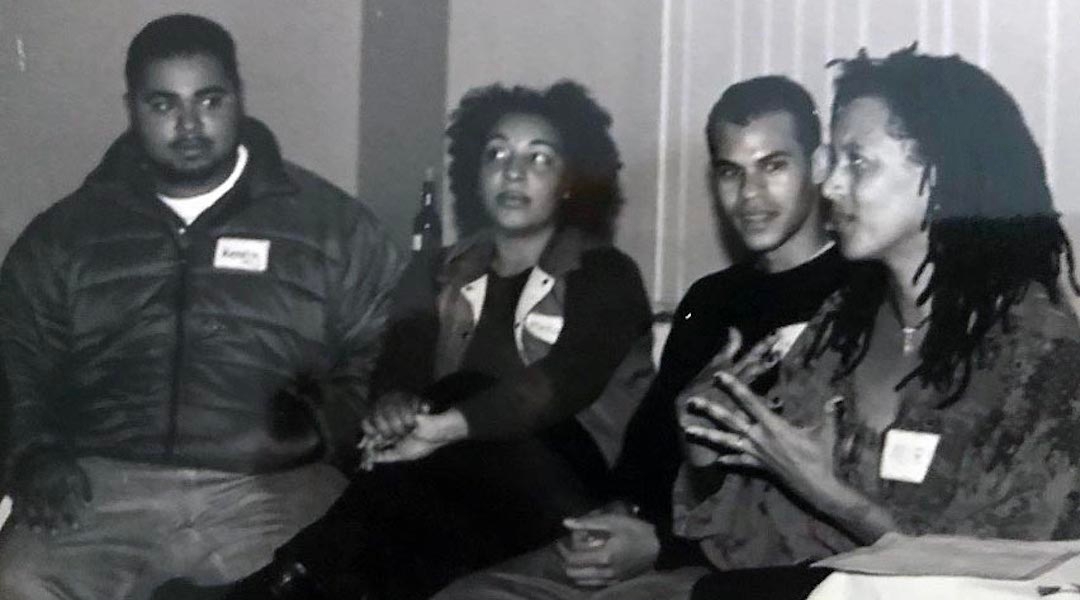
Attendees at a Hanukkah party in 2000 in San Francisco that marked the launch of Be’chol Lashon. (Courtesy of Be’chon Lashon)
The late 1990s and early 2000s saw the establishment of the first wave of organizations catering to multiracial Jews.
Some were responding to an increase in transracial adoption and were founded by white Jewish parents who were grappling with what it meant to have adopted nonwhite kids. At the time there were few resources on diversity in the Jewish community, and some parents found that their children were met with ignorance by community members and were nearly always the only nonwhite kids in Jewish settings.
The Jewish Multiracial Network was founded in 1997 by a group of parents on the East Coast struggling with these issues, said Chava Shervington, the group’s past president and a current board member.
“They were looking to create supportive spaces for their children, create places where their children’s identities could feel really supported,” Shervington said. “Where their kids could be more than the only or one of a very few children of color in their community, where they could bring forward and strategize with other families around how to support their children, and how they could make their communities at home more inclusive and supportive.”
In San Francisco, Gary and Diane Tobin became interested in diversity in the Jewish community after adopting an African-American son. In 1999, they launched a study aimed at understanding racial and ethnic diversity in the community, and the following year they founded Be’chol Lashon, an organization that educates about diversity in the community and does programming for Jews of color and their families, including a summer camp for children.
“There really weren’t any resources, which essentially was why we did the study we did,” Diane Tobin said. (Gary Tobin died in 2009.)
Both groups brought together multiracial Jewish families and sought to educate about diversity in the wider Jewish community.
Other organizations were led by Black Jews — including those whose families had been practicing Judaism for generations, children of interracial marriages and converts. Some organizations included Ethiopian Jews and Jews from the Middle East who identified as people of color.
In 1997, Yavilah McCoy started organizing an email list that was the beginnings of Ayecha, an education and advocacy group for Jews of color that was officially incorporated four years later. In 2000, she organized the group’s first conference, where some 100 Jews of color gathered in Edison, New Jersey. Many participants had never been in a Jewish space with other Jews of color.
McCoy recalled the experience as “emotionally just mind-blowing.”
“People said when they came downstairs that first Friday night and saw all those faces in the room, many of them wept,” she said.
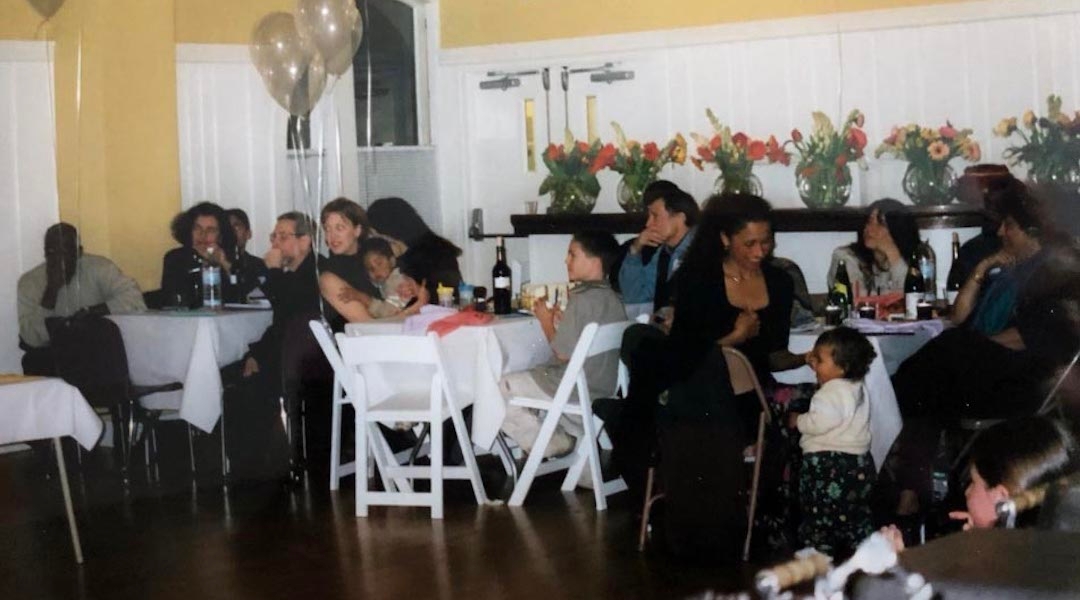
Attendees at the Hanukkah party that marked the launch of Be’chol Lashon. (Courtesy of Be’chon Lashon)
Some groups cast an even wider net, including people identifying with the Black or Hebrew Israelite movement. The movement consists of African-Americans who believe they have Jewish roots. Adherents subscribe to a range of religious views and traditions, with some closely mirroring those of regular synagogues while others differ greatly.
That was the case for the Alliance of Black Jews, which was founded in 1996 by Robin Washington, a writer with Black and Jewish roots, Michelle Stein-Evers, a Black and Jewish activist, and Capers Funnye, a rabbi who leads a Black Israelite congregation. Though Funnye has been eager to bridge ties with the mainstream Jewish community and underwent a Conservative conversion, most who are affiliated with the Israelite movement have not converted and thus are not recognized as Jewish by mainstream synagogues.
For many Jews of color, being part of this group was the first time they were coming in contact with others like them. With the emergence of the internet, many were able to connect despite being in different geographic locations, said Bruce Haynes, a sociology professor at the University of California, Davis, who has researched Black Jews.
“They were beginning to talk about how they felt about being with the Jewish community,” he said, “and topics of alienation and racial marginality were primary.”
Haynes said the 1990s proved a fertile time for such groups for a number of reasons.
Recent airlifts of Ethiopian Jews to Israel and a greater recognition of Sephardi Jews in America helped expand the understanding of what Jews could look like. In addition, the growth of the “multiracial movement,” a movement in wider American society of mixed-race families who wanted to add a “multiracial” option to the U.S. census, helped expand the awareness of the fluidities and nuances of racial identity.
“There were a number of social demographic things happening all at once that suddenly makes people who were once maybe invisible visible,” Haynes said.
Still, while there was a growing awareness of diversity within the Jewish community, many Jews of color did not feel welcome in their communities.
For McCoy, the founder of Ayecha, it was important to create a space for Jews of color because she felt that in the wider community, Jewishness was often equated with being white. She said her work organizing Jews of color wasn’t always well received by white Jews, and it was hard to secure funding from Jewish philanthropies for Ayecha’s work.
“When we would say the term Jews of color in Ayecha, we were often accused of being subversive and of pulling ourselves away from the broader Jewish community,” she said.
Jews of color take the helm
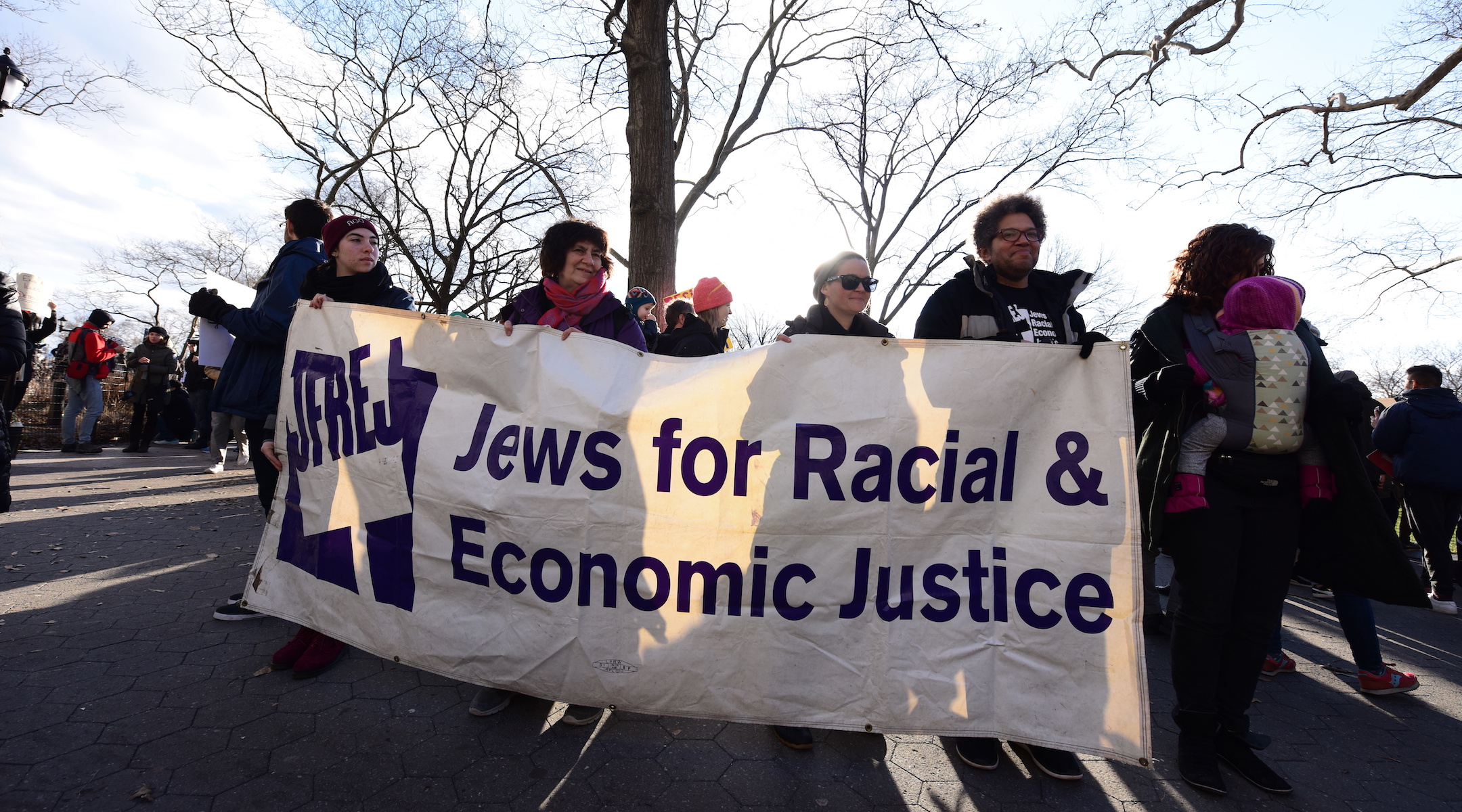
JFREJ members at a protest in New York in 2017. (Andy Katz/Pacific Press/LightRocket via Getty Images)
About a decade after its founding, members of the Jewish Multiracial Network started questioning why the organization was largely led by white Jews.
“The organization had a really powerful realization that if this organization is really about improving the lives of Jews of color, of making them feel truly inclusive and welcoming and making sure that adult Jews of color feel at home in this organization as our children do, they really need to be in positions of leadership,” said Shervington, the past president. “They really need to be guiding this conversation, they need to be prioritizing this conversation, and that is going to require that we change the way we operate, and some folks stepped back from positions of leadership, which allowed the leadership of Jews of color to be elevated.”
Since the shift took place in the late 2000s, the group has been led primarily by Jews of color like Shervington, who is Black.
Jews for Racial and Economic Justice, or JFREJ, went through a similar transition half a decade later. Founded in 1990, the organization for much of its history was made up largely of progressive, white Jews who built coalitions with non-Jewish communities of color on race and poverty-related issues. But Jews of color were largely missing from the conversation.
Leo Ferguson set out to change that when he joined the New York-based organization in 2014.
“It was clear to me that there was something missing in this model, which is of course that there was a whole community of Jewish people of color who were not part of this community,” he said.
So Ferguson, who is Black and Jewish, founded a Jews of color caucus and started recruiting for a more diverse membership. Six years later, JFREJ has a much more diverse membership and its staff of nine includes three Jews of color.
“The organization is still overwhelmingly white … but we have a thriving caucus and have had for years, and that caucus has played a defining role in how the organization thinks about its own community and its own base,” Ferguson said.
Having a more diverse membership has also changed the conversations with communities of color.
“For the first time we have Black and brown people who are Jews forming relationships with other Black and brown non-Jewish organizers around issues we all share mutual interests around,” he said.
A turning point in the Reform movement
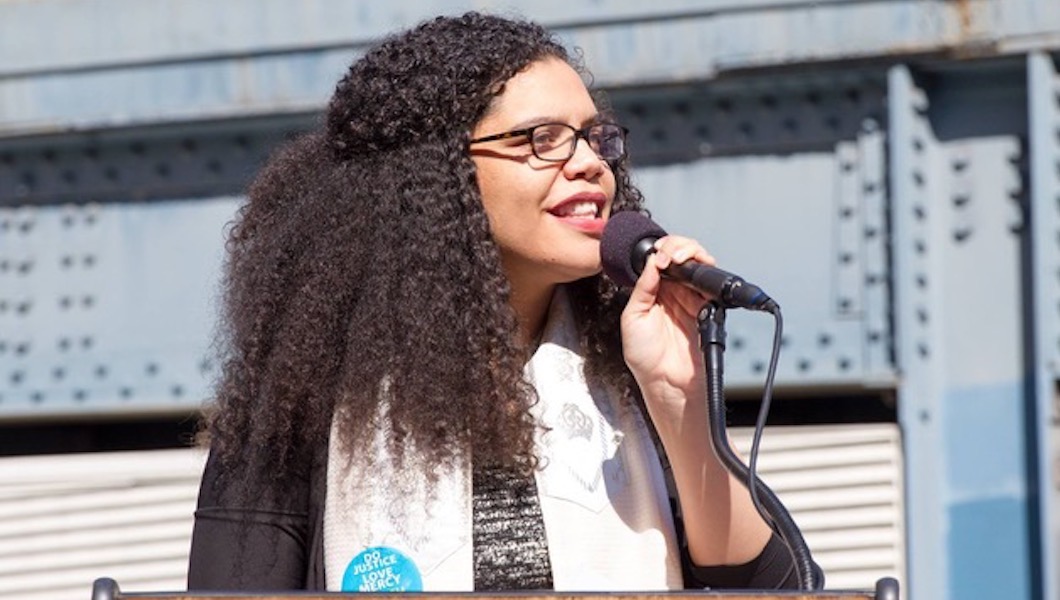
April Baskin speaking at the March for Racial Justice in New York in 2017. (Mirah Curzer)
Though some individual organizations, such as JFREJ, were diversifying, there were no Jews of color working in leadership roles in the vast majority of Jewish institutions — such as synagogues, federations and foundations. No denominational body had a nonwhite Jew in a leadership position.
That changed in 2015 when the Union for Reform Judaism announced it was appointing April Baskin, a Black Jewish woman, to the position of vice president of audacious hospitality. Baskin’s job was to engage Jews that had been marginalized in the Jewish community — including people of color, LGBTQ people, interfaith families and people with disabilities.
“That was such a visible signal within the Jewish community that was hard to ignore,” said Haynes, the scholar of Black Jews. “I would imagine people felt ‘Oh, you see me. You finally see that I’m here.’”
Baskin remembers that she “nearly cried” when she was approached for the role and read the job description, which quoted from a speech by the URJ’s president, Rabbi Rick Jacobs, about including multiracial Jews in the community.
She said “as someone who closely studied this work it was a landmark, a huge milestone moment in the context of the Jewish community.”
Baskin recalled joining an organization in which many people were unaware of Jews who were not white.
“When I came in it was a shock to a lot of people that I existed,” she said.
Baskin frequently appeared with Jacobs, and the movement often spoke about her role. She rose to fame in the community so quickly that she would be recognized on the subway and once while vacationing on Martha’s Vineyard.
She quickly made an impact. Baskin frequently wrote and spoke about the experiences and need for inclusion of Jews of color and attended anti-racism rallies. She created the JewV’Nation Fellowship, a leadership fellowship that engaged a diverse group of mostly millennial Jews. Its second cohort consisted entirely of Jews of color.
The URJ from which she departed last year was very different from the one she had joined four years earlier, Baskin said.
“When I left people were grappling with key inclusion questions, really beginning to consider the nitty-gritty nuts and bolts of meaningful inclusion initiatives. So that moved us through ‘OK it’s a shock’ to actually ‘This is a reality’ — and not for the entire Reform movement, because it is huge — but it was definitely true among many of its local and national leaders,” she said.
Representation continues to lag
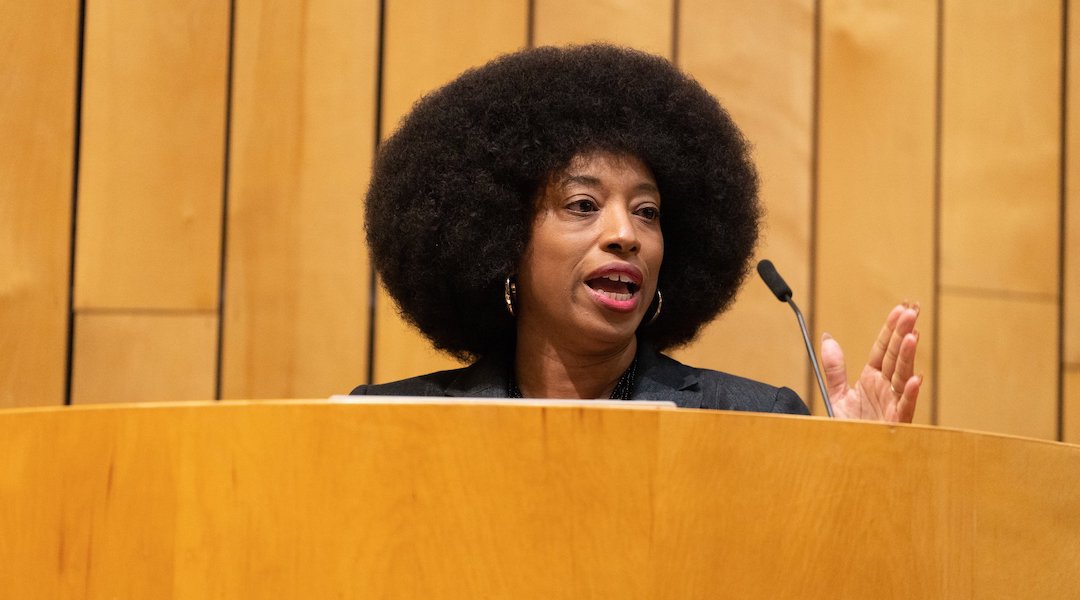
Yavilah McCoy speaking at a Dimensions event. (Courtesy of McCoy)
While Baskin’s appointment helped move the dial forward, Jews of color continued to be far and few between in Jewish organizations.
The vast majority of synagogues, rabbinical bodies, federations and foundations are still staffed only by white people. When Jews of color are brought on, they often are the only nonwhite person in the organization.
In 2018, SooJi Min-Maranda became the first Jew of color to lead a denominational body with her appointment as director of ALEPH: The Alliance for Jewish Renewal, the ruling body of the Jewish Renewal movement.
“There are small advances, small changes that are starting to happen in terms of Jews of color in leadership positions, but the scale in terms of breadth and depth of leadership is not where it needs to be,” Min-Maranda said.
In many cases, Jews of color find themselves advocating for inclusion within largely white organizations.
Gamal Palmer is the only Black Jew on the 170-person staff of the Los Angeles Jewish Federation. Though his portfolio has to do with senior leadership development, he decided 2 1/2 years ago to take on the project of engaging Jews of color, which had not been an area of focus.
The project has been “really hard,” he said, both in finding a strategy to engage Jews of color and making change happen in the Jewish community.
“We as an organization pride ourselves on striving to be inclusive in different ways, but we just hadn’t really prioritized Jews of color yet, so because I’ve worked there it’s been a really challenging journey to balance what I take personal and how to function as a professional,” he said. “And also I’ve gone through a big process of learning how to create allies within the organization.”
McCoy, the founder of Ayecha who now runs Dimensions, is disappointed by the lack of Jewish organizations run by Black women like herself.
“As one of the only Black women CEOs at a not-for-profit that provides direct service for Jews of color in our community,” she said, “I would like to see Black lives matter more in this moment by deepening investment in the leadership of Black Jewish women leaders and the causes that they lead.”
Ilana Kaufman spent six years working at Jewish institutions in the San Francisco area, including the local federation and Jewish Community Relations Council. At both organizations, she was the only Jew of color. Kaufman said she experienced hostility when expressing support for the Black Lives Matter movement — including having it suggested that she should not carry a small Black Lives Matter sign inside the federation building and continually being dismissed when talking about the importance of both hiring and engaging Jews of color.
“When talking about Jews of color, despite the fact that I was standing right there as a Jew of color, I was constantly given wonder about how many Jews of color are there and why was I making this such a big deal,” she said.
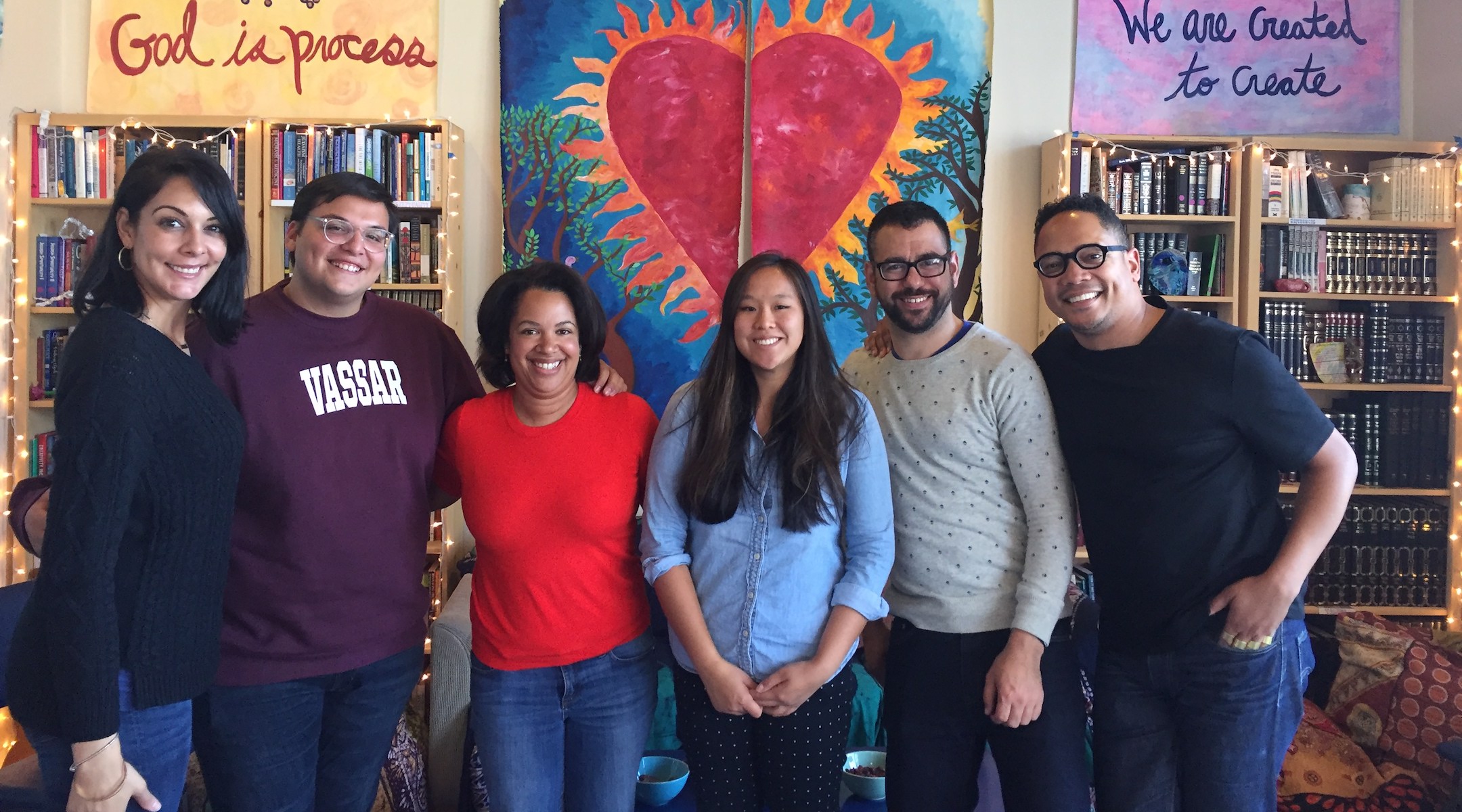
Participants in a think tank event hosted by the Jews of Color Field Building Initiative in Berkeley, Calif. (Courtesy of Jews of Color Field Building Initiative)
In 2018, Kaufman left the Jewish Community Relations Council and went on to found an organization where Jews of color took center stage. The Jews of Color Field Building Initiative secured funding from the Harry and Jeanette Weinberg Foundation for a study that aimed to answer questions about how many Jews of color lived in the U.S. — a question that Kaufman said she was asked frequently when speaking about the importance of including that population.
Published in 2019, her report found that previous studies had undercounted nonwhite Jews in a number of ways. Those included being inconsistent in how the studies had asked about racial background — or not asking at all — and using sampling methods that recruited respondents with stereotypically Jewish last names or relying on community lists, both of which underrepresent nonwhite Jews, according to the researchers.
Using three of the most comprehensive surveys that did ask about race and ethnicity, the researchers said they could roughly estimate that 12-15% of American Jews are people of color.
Previous studies, from the 2013 Pew survey of American Jews, to 2019 estimates by Brandeis University’s American Jewish Population Project and local community studies, had found a range of 6-14% Jews of color.
“Having a report that is thoughtfully done that looks at both the data, but also helps the next set of reports to be more inclusive, I think has engaged the right kinds of organizations in making sure there’s a thoughtful understanding of racial diversity in the community,” Kaufman said.
One of the advocates at the Weinberg Foundation for funding Kaufman’s study was Paula Pretlow, the first Black Jew to serve on the foundation’s board. The grant was the first domestic one for the foundation for an organization led by a Jew of color and focused on that population.
“I think unless you have a diverse board, unless you have a diverse set of people sitting around a table talking, you’re going to miss something by definition,” Pretlow said.
Last year, after hosting a presentation by Kaufman’s Field Building Initiative on its study, the UJA-Federation of New York launched a task force consisting of a handful of New York-based Jews of color working to make the Jewish community more inclusive. The federation has ramped up its giving to a number of initiatives related to Jews of color and their inclusion in the Jewish community in recent years, including granting $150,000 to the Jewish Multiracial Network and $48,600 to Ammud: The Jews of Color Torah Academy. The organization has also provided nearly $1 million in funding to Be’chol Lashon since 2011.
“It is a strategy priority for UJA-Federation,” said its deputy chief planning officer, Hindy Poupko. “The priority is twofold — one is ensuring that Jews of color are fully represented in our institutions and more broadly in our community, and also enabling and encouraging the Jewish community to engage in advancing the broader racial justice agenda.”
Black Lives Matter enters the Jewish community
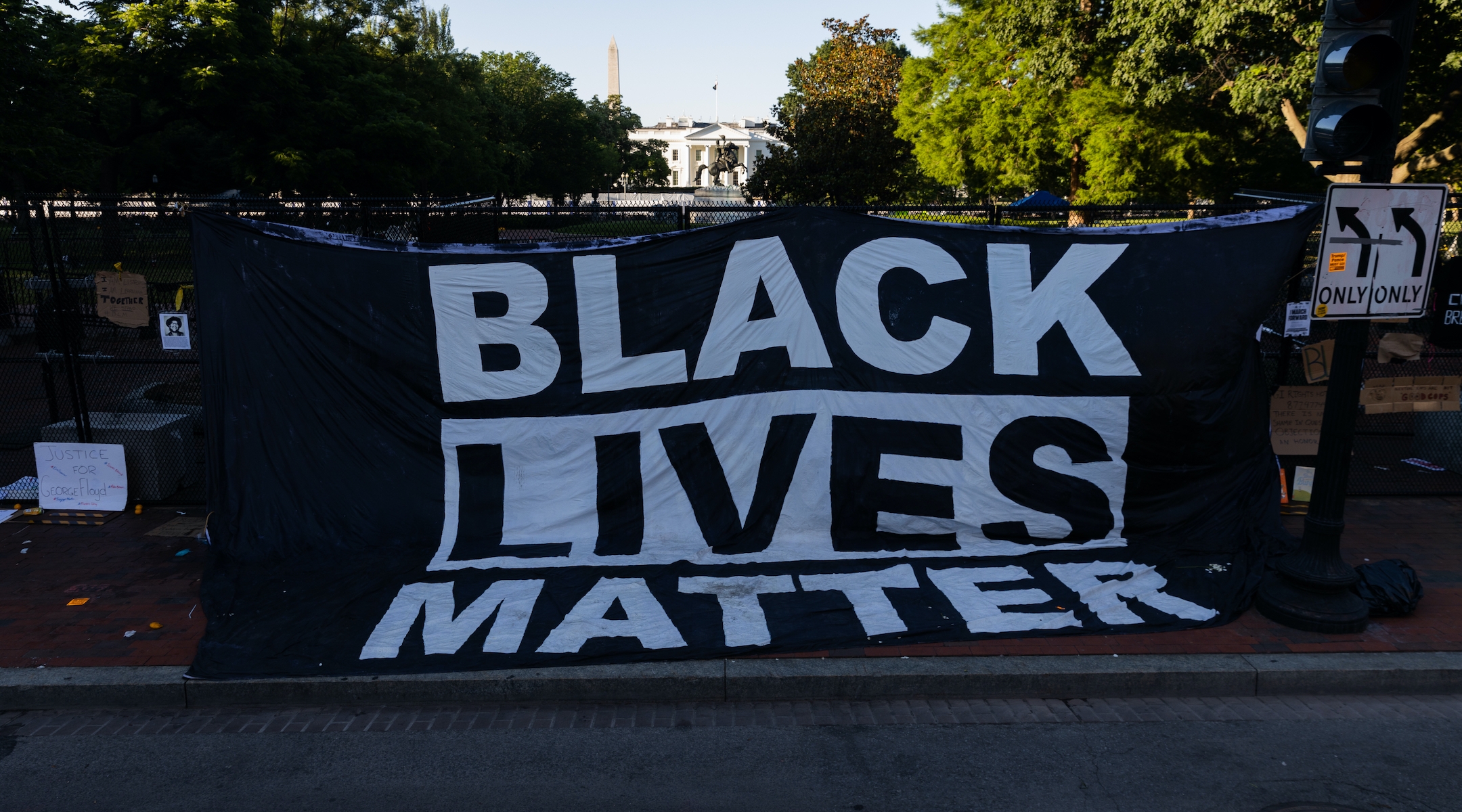
A Black Lives Matter sign outside the White House during a protest in the aftermath of the death of George Floyd. (Aurora Samperio/NurPhoto via Getty Images)
The Black Lives Matter movement, which was founded in 2013 but rose to greater prominence in 2016 — and more recently last month with the death of George Floyd — has ignited conversations about racism across the political spectrum in American society.
Many Jewish communities were hesitant initially to participate in the movement, largely because its organizing group’s 2016 platform accused Israel of committing genocide against the Palestinians.
But as the protests have continued to gain steam in light of recent events, conversations around racial justice have become more common. Organizations from across the denominational spectrum condemned Floyd’s death and more than 130 groups signed a letter pledging to fight systemic racism — though the letter notably did not include any mentions of the Black Lives Matter movement.
“A few years ago, I think most of us couldn’t imagine that so many Jewish organizations would even notice us or be talking about us, would be talking about issues of racial justice in the way that they are now,” said Ferguson, the JFREJ organizer. “I think that’s been a really significant change.
“When the Black Lives Matter platform came out [in 2016], it was a controversy in the Jewish community, and nowadays so many Jewish institutions are happy to say proudly that they support Black Lives Matter.”
This summer, as the country reckoned with centuries of racial injustice, gaps in the Jewish world’s understanding of Jews of color and the issues they face drew renewed attention.
Poupko of the New York federation said the protests following Floyd’s death accelerated and broadened communal conversations around racism.
“As the protests were raging on the streets of New York, my phone was ringing with calls from all kinds of synagogues and organizations across New York asking for resources, [asking] how can they bring a workshop on racism to their synagogue, how can they talk about their day school students about what’s going on,” she said. “There was clearly a focus, an interest on this issue in a way that I personally have personally not seen before.”
Funnye, the rabbi of a Black synagogue in Chicago, hopes that this moment will bring about change both inside and outside the Jewish community and help build bridges between white and Black Jews, including those affiliated with the Israelite movement.
“The whole piece that has the country in a tailspin from the murder of the young man Floyd and several other people that have come to light of recent note have really, I believe, had the established Jewish community looking at itself and doing some self-examination as to how they receive people who are even interested in Judaism,” Funnye said.
“It is my prayer that the Jewish community will in fact begin to be more open, be more inclusive of Jews of color and African-American Jews.”
Yet even as activists are hopeful about the new conversations that are happening, many say that some of the original problems from decades ago have persisted.
That Jews of color continue to feel unwelcome in synagogues and other Jewish spaces has given rise to a new crop of groups catering to and led by Jews of color. They include Ammud: The JOC Torah Academy; TribeHerald, a new publication by and for Jews of color; Edot Midwest, an organization for Jews of color in the Midwest; the Mitsui Collective, which supports community building for multiracial Jews; and Black Yids Matter.
“There’s a common story that we hear from many of our members of feeling excluded in Jewish learning spaces. And that can look many different ways,” said Arielle Korman, the co-founder of Ammud, a New York group founded in 2019 that provides courses on Hebrew and Judaism taught entirely by Jews of color to students of color. “One piece is a common story of people being asked again and again to prove they belong in the space, to prove their belonging.”
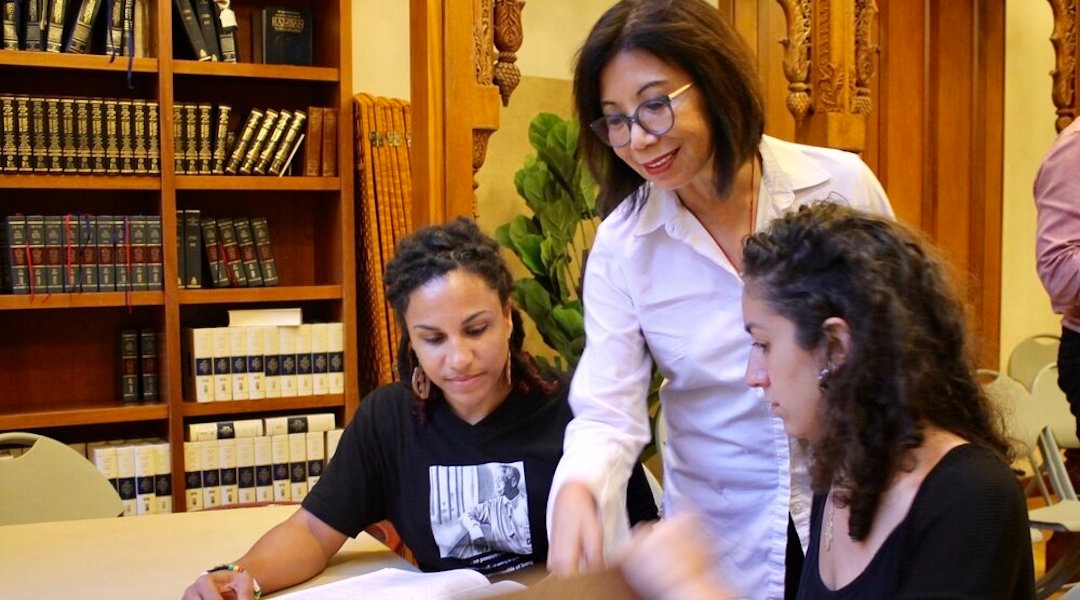
Rabbi Mira Rivera, center, talks to students at Ammud: The JOC Torah Academy. (Courtesy of Ammud)
Korman said the reason such groups are needed shouldn’t be overlooked. Many Ammud students have felt so unwelcome that they stopped participating in Jewish communal life, she said.
“I think that the fact that there’s a need for this kind of space should not be something that makes white Jews uncomfortable,” she said. “And at the same time, it’s real. We’re not in a place where a place like Ammud is no longer necessary. And that shouldn’t make anyone feel personally bad, but it should also indicate that that way we in the white-dominated Jewish community have been framing diversity and inclusivity hasn’t been enough.”
Meanwhile, Shoshana Brown, an organizer at JFREJ and the co-founder of Black Yids Matter, hopes the current moment will invigorate Jewish leaders to take action.
“We’re at a point now where I hope that this moment allows the white Ashkenazi institutional Jewish community to recognize that a statement is not enough and that leaning on Rabbi Joshua Heschel’s example and bringing that up every time there’s a conversation about race — it’s over,” she said. “We can’t lean on that anymore. That was 60 years ago. We’ve got to move forward and what are you actually doing today about this — and not just for the larger Black community but within the Jewish community?”
One major change was the hiring last month of Rabbi Isaiah Rothstein by the Jewish Federations of North America. Rothstein said he had been invited to speak about 20 times since Floyd’s death to Jewish organizations about racism and his own experience as a Jew of color. Now his audience will be the nearly 450 local Jewish communities represented by Jewish federations, and his job will be to help federations and other Jewish organizations recruit Jews of color, conduct racial equity training, and strengthen ties with groups representing communities of color and supporting police reform.
The organization announced it had hired Rothstein to lead its racial justice work in a statement whose title — “On Racial Justice We Can All Do Better” — seemed to acknowledge a lack of progress. Rothstein said that sentiment sums up the current status of the collective conversation about race in the Jewish world.
“I feel like recently people now realize how important this issue is,” Rothstein said. “There’s regret, there’s sadness that there isn’t representation. There’s sadness that there aren’t relationships with the Black community since the civil rights era. There’s a recognition that we need to grow and be better.”















